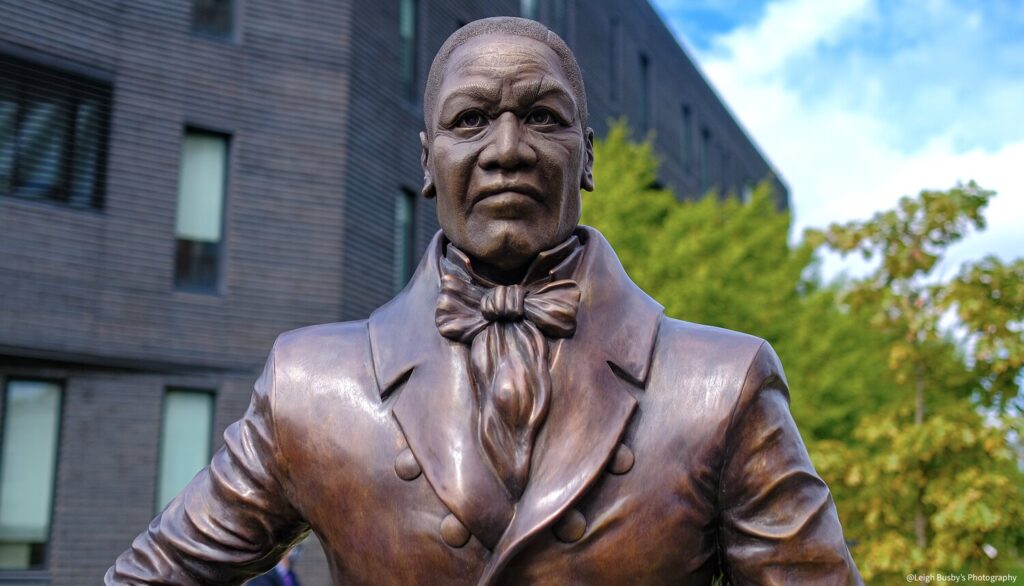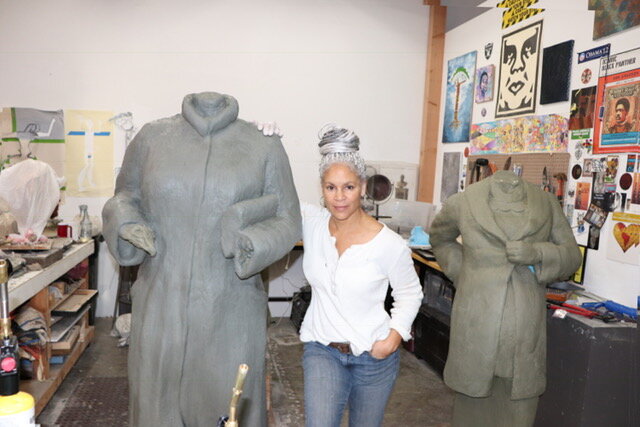
At 61 years old Dana King exudes unbridled joy as she talks with passion about her third career. King, whose love for life is contagious, has an infectious smile and a head full of long grey hair that dances everywhere as she talks about her hopes, dreams and accomplishments.
“This is my third career. I’m going to retire again when I’m 80 or so and maybe I’ll do something else,” King said.
Disaster Queen
King graduated in 1982 from Ferris with a degree in marketing. She worked for five years at LA KNBC and KABC as a marketer.
When her boss fired the only black reporter at KABC LA, there was panic as to who would replace her. The office secretary recommended hiring King and they did, even though she did not have any intention of working in journalism.
“You might hire me because I’m black, but you won’t keep me because I’m black. You’ll keep me because I’m good,” King said with a chuckle, as she notes that she was terrible at first.
This was the humble beginning to a 25-year storied career in broadcast journalism. She covered disasters all across the globe and her kids nicknamed her the ‘disaster queen’.
Her first international coverage was in Honduras after Hurrican Mitch decimated the country. In fact, she won a local Emmy award for her reporting from 1998-2020 covering the effects of the hurricane.
“Everybody lost so much, but they banded together and helped one another and that was so eye opening to me,” King said. “I saw that again in New York City when I was the first television reporter from the west coast to make it to New York City three days after 9/11.”
King explained that although she reported on many devastating disasters, covering 9/11 was one of the hardest stories of her entire journalism career.
“In my career I went places where people needed help from the United States and here I was in my own country watching it receive the same assistance that I had seen around the world,” King said.
King always knew that she didn’t want to work in television after age 50 because she always worked for men and she did not want them to tell her she had to change her appearance. So at the age of 52 she left the business to pursue different dreams.
Taking up space
King received her MFA in fine art painting at age 48. However, a weekend sculpture course with a friend a few years later is what changed the trajectory of her life. She was immediately hooked.
She is now represented by The Thelma Harris Art Gallery and since 2012 she has been a full-time artist. She specializes in creating sculptures of black bodies out of bronze.
“Sculpture inhabits space and space is power and it’s really important for African descendants to see their memories, their stories out in the world,” King said. “It’s especially important for children to see sculptures of people who remind them of their grandparents, or their parents, or uncles and aunts. That they actually see themselves in the world and know that their history is important to the building of America.”
King detailed that creating a sculpture is a multiphase process which starts with making a clay piece in her art studio, which typically takes 4-6 months. Through various phases in the foundry and making molds, the final product is created by pouring molten liquid bronze into the mold and then chipping it out.
King has stayed remarkably busy with commissioned pieces that have been installed across the United States, from Connecticut, to Alabama, to California.
Most recently, she finished a sculpture of Dr. Huey P Newton, who was the cofounder of the Black Panther party, per his widow Frederika Newton’s request.
The statue is going to be dedicated and installed in West Oakland on Oct. 24. Huey was born and died in West Oakland, so, in a sense, this sculpture is bringing him home, King explained.
Another piece that King created was installed in New Haven, Connecticut in Sept. 2020. The sculpture tells the story of an African descendant who helped build the city’s infrastructure.
“His history wasn’t known and his history was so important to New Haven and now the history is being told,” King said.
Behind every sculpture there is an immense amount of research that King conducts. She aims to tell history truthfully and accurately through her art.
“When you tell stories on tv they last for two minutes and then they’re gone. But these stories that I tell in bronze will last as long as the material lasts and bronze lasts hundreds, even thousands of years,” King said.
King eagerly anticipates the new projects that are in store for the coming years.
One such project is creating a sculpture to honor the first cohort of black deaf students at Gallaudet University from 1952.
Recently, she has been commissioned by the San Francisco Giants to create a sculpture honoring Toni Jones, an African American woman who was the first woman to ever play major league baseball in the United States.
“(I’m creating this) for all the little girls and little boys who play baseball, but really for the little girls so that they know that if they desire to do it, that it has been done and it can be done again,” King said.

Looking Back
Looking back over her beginnings at Ferris decades ago and her career to date King explained that everything she has done in her life informs what she does today. She is grateful for each career she has been able to have and is especially grateful for where she is right now.
“I love history and research and I get to do that with my art and I don’t have to put on a nice suit or high heels or makeup to do it. I can be a bum in my studio,” laughed King.
Even though she now lives and works in California, she still fondly remembers Ferris State University and is grateful for the start to a unique professional career.
“I grew up in Big Rapids. I went to high school there, went to college and I can always come back. I’ve never forgotten that and I never worry that there won’t be a place for me in the world. I’m very proud that I went to Ferris,” King said.
Even though King lives on the other side of the country, she has been able to use her connections on the West Coast, especially with the Oakland Museum, to be a cabinet member for the new Jim Crow museum that is set to be built on the Ferris campus. She noted that all these years later she is grateful to be at a place in her life where she can give back to the school and the Ferris community.
From marketing, to journalism, to art, King’s career has had many twists and turns. However, her dedication to telling important stories and sharing the truth with the public has not wavered. As she assists in the development of the new Jim Crow Museum she desires to teach the community about the horrors of racism and to encourage museum goers to think deeply.
